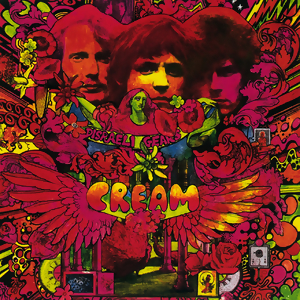By Dennis Hartley
(Originally posted on Digby’s Hullabaloo on July 14, 2018)

punk (noun)
[mass noun] A loud, fast-moving, and aggressive form of rock music, popular in the late 1970s. ‘punk had turned pop music and its attendant culture on its head’
1.1 [count noun] An admirer or player of punk rock, typically characterized by coloured spiked hair and clothing decorated with safety pins or zips. ‘punks fought Teds on the Kings Road on Saturday afternoons’
– from The Oxford Living Dictionary
So what does ‘punk’ really mean? I suppose it depends on who you ask. Tony James of Generation X likened it to “…my childhood, the glorious, very exciting naivete of rock n’ roll.” Kurt Cobain defined it as “…musical freedom. It’s saying, doing and playing what you want.” David Byrne surmised that ‘punk’ was “…defined by an attitude rather than a musical style.” To Lester Bangs, it was “…a fundamental and age-old Utopian dream: that if you give people the license to be as outrageous as they want in absolutely any fashion they can dream up, they’ll be creative about it…and do something good besides.”
Seminal punk provocateur Malcolm McLaren explained it thus (in an interview taken from Legs McNeil and Gillian McCain’s Please Kill Me: The Uncensored Oral History of Punk) … “I was just this strange guy with this mad dream. I was trying to do with the Sex Pistols what I failed at with the New York Dolls. I was taking the nuances of Richard Hell, the faggy [sic] pop side of the New York Dolls, the politics of boredom and mashing it all together to make a statement, maybe the final statement I would ever make. And piss off this rock ‘n’ roll scene.” Well, he certainly succeeded on that last part; but he also shook up the status quo. That said…he didn’t do it alone, despite his braggadocio.
Specifically, it’s possible that Mr. McLaren would have lived a life of quiet desperation sans acclaim or notoriety, had he never crossed paths with a Vivienne Westwood. Their longtime relationship was complicated; briefly romantic and fitfully platonic at best. Ultimately, they settled for pragmatic, as it was their creative partnership that fueled the U.K. punk scene-with McLaren on the music end, and Westwood covering the fashion front. The couple co-founded “SEX” in the mid-70s, the King’s Road boutique where future members of the Sex Pistols famously hung out. This was where Westwood fully realized her knack for couture, putting her on the map as a key architect of punk fashion.
Unfortunately, this fascinating chapter of Westwood’s life is largely glossed over in Lorna Tucker’s slickly produced yet curiously uninspired documentary Westwood: Punk, Icon, Activist. Granted, the feisty and still-punky Westwood appears quite reticent to reminisce on-camera about the Sex Pistols era; but frankly, that is why most people would be intrigued to see this film in the first place (that’s my theory…I could be wrong).
Westwood herself is entertaining; as is her current husband/creative partner Andreas (he’s a trip…and so spooky close to Sacha Baron Cohen’s “Bruno” character that I can’t help speculating if he was the inspiration). I did come away admiring Westwood’s dedication to various causes. However, I didn’t feel I learned much about who she really is or what makes her tick (e.g. there is very little regarding her life pre-McLaren). Still, if you’re attracted to the world of overblown couture and underfed models (I’m afraid I am not) then you might find this sketchy hagiography more engaging.












:format(jpeg):mode_rgb():quality(90)/discogs-images/R-2408506-1282394676.jpeg.jpg?resize=353%2C353&ssl=1)


 The Moody Blues– Days of Future Passed…Mellotrons R Us. Symphonic rock before anyone thought it was even possible. A thing of beauty. Best cuts: “Tuesday Afternoon” and “Nights in White Satin”.
The Moody Blues– Days of Future Passed…Mellotrons R Us. Symphonic rock before anyone thought it was even possible. A thing of beauty. Best cuts: “Tuesday Afternoon” and “Nights in White Satin”.
:format(jpeg):mode_rgb():quality(90)/discogs-images/R-1094230-1475920253-1801.jpeg.jpg?resize=350%2C353&ssl=1)

